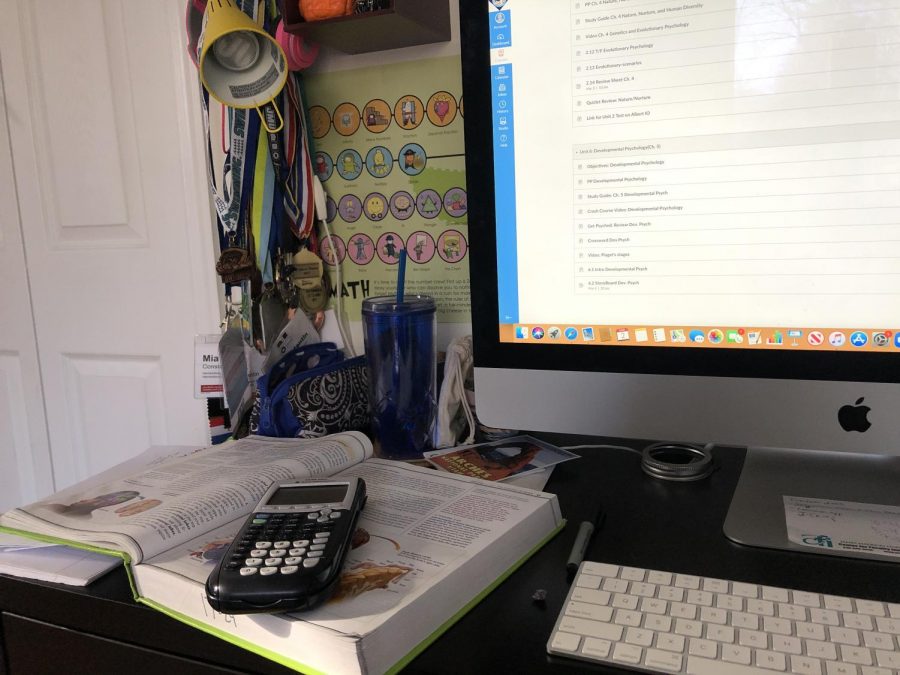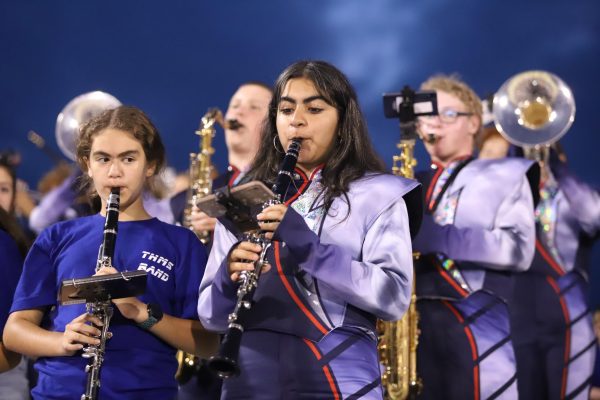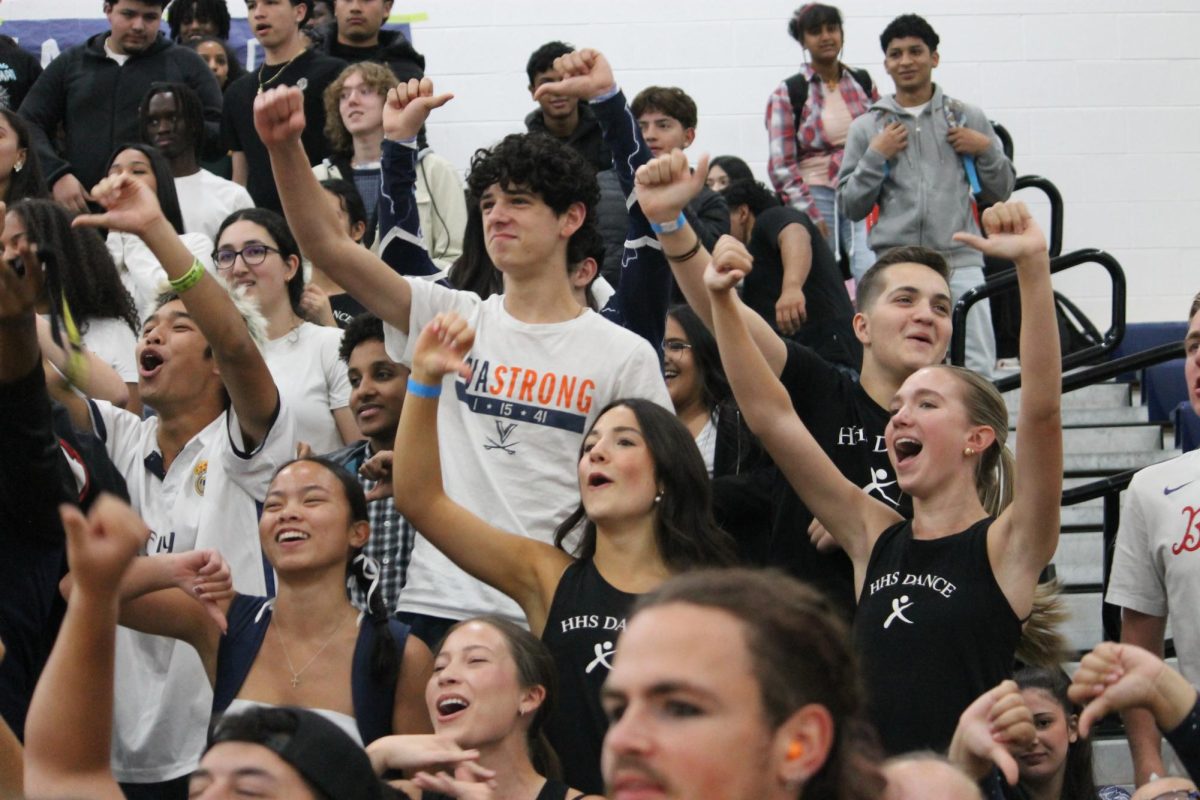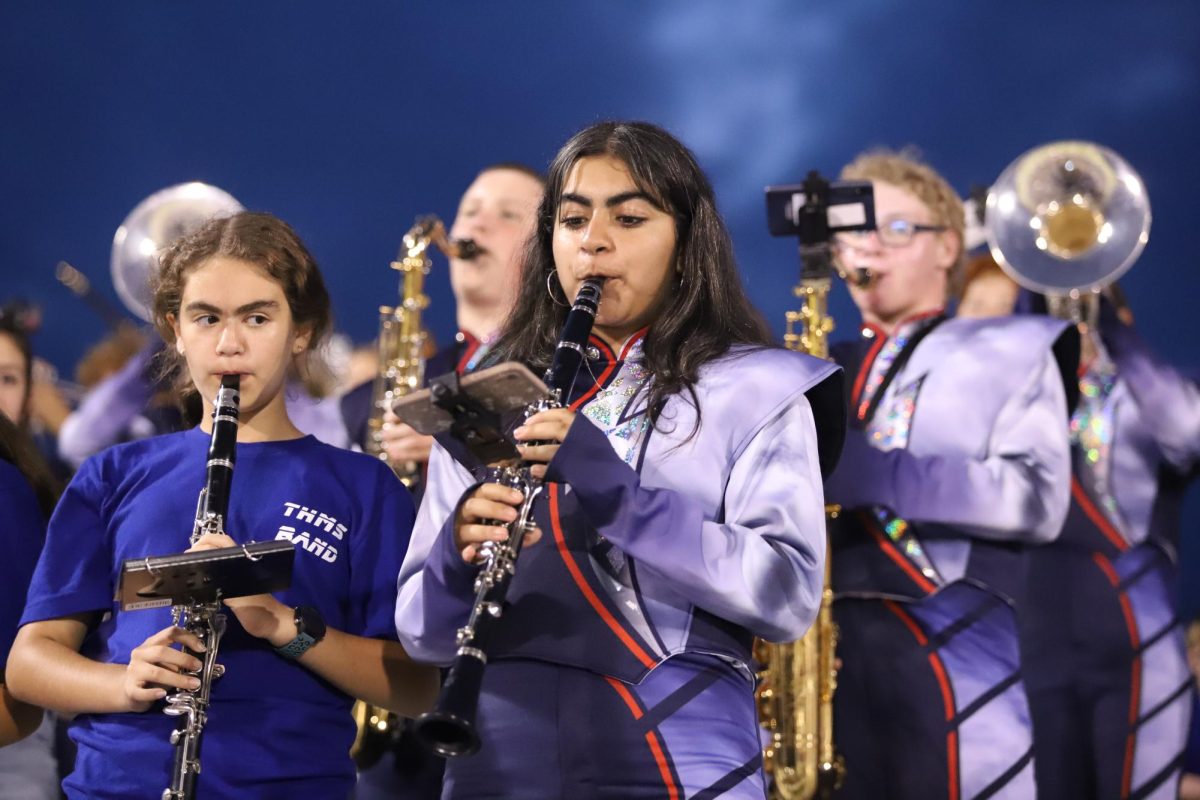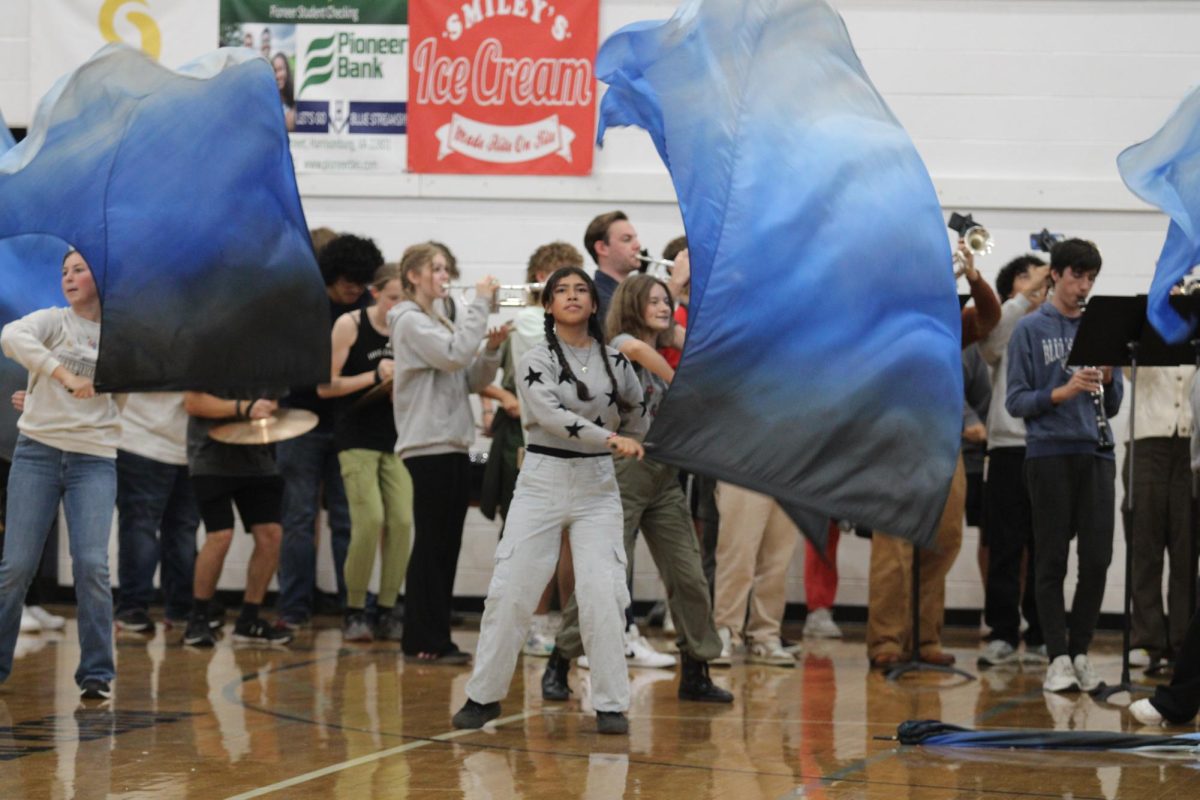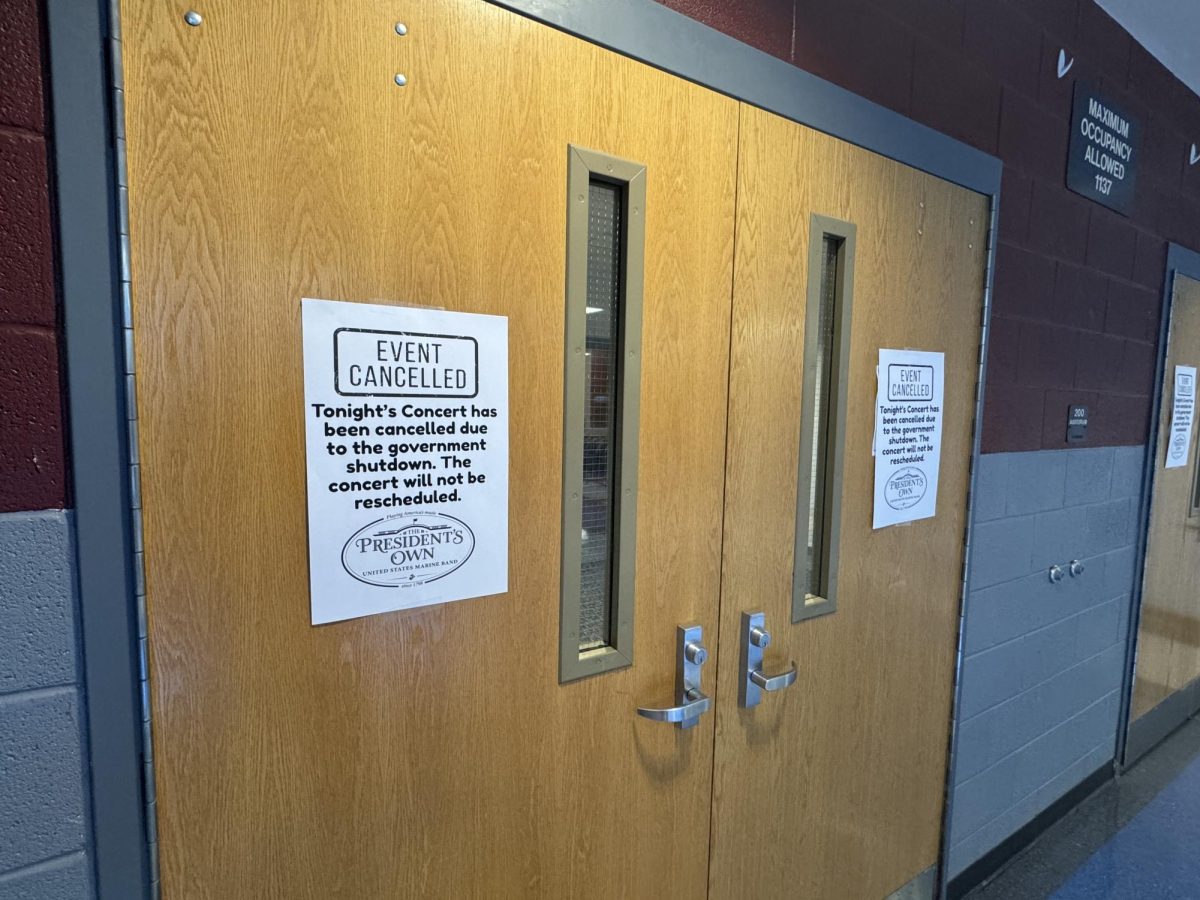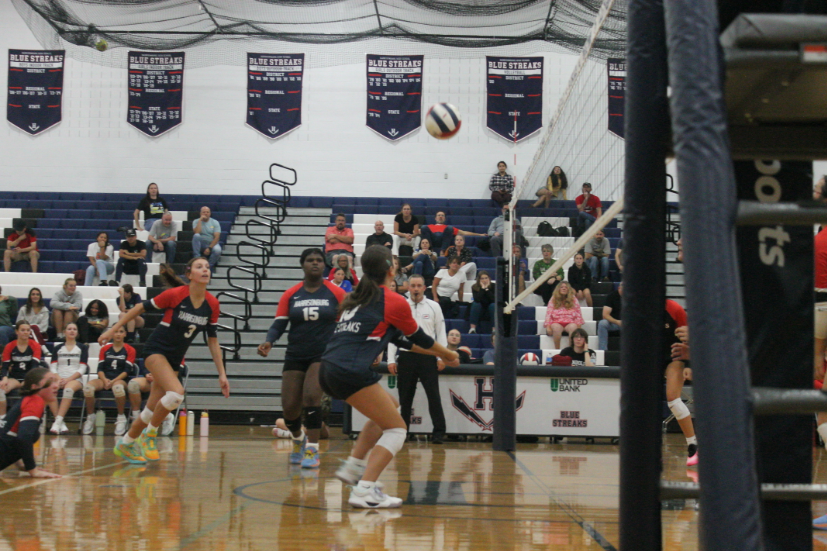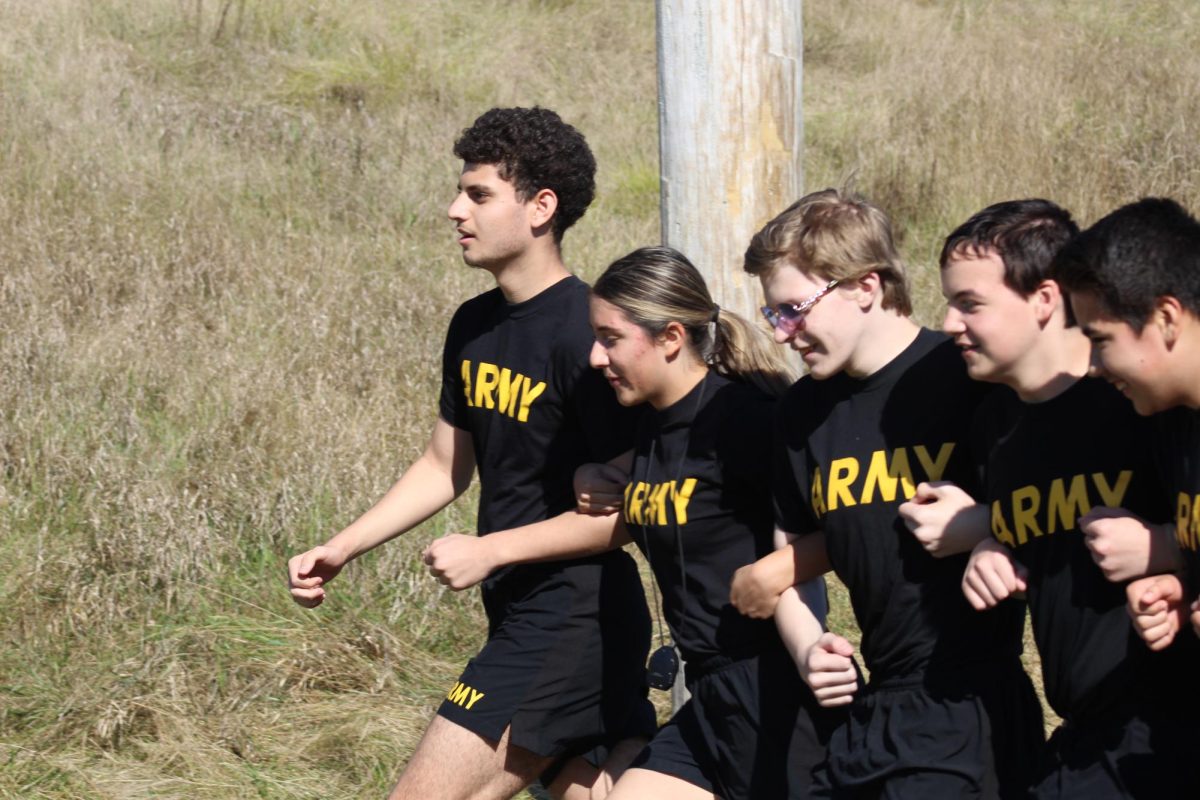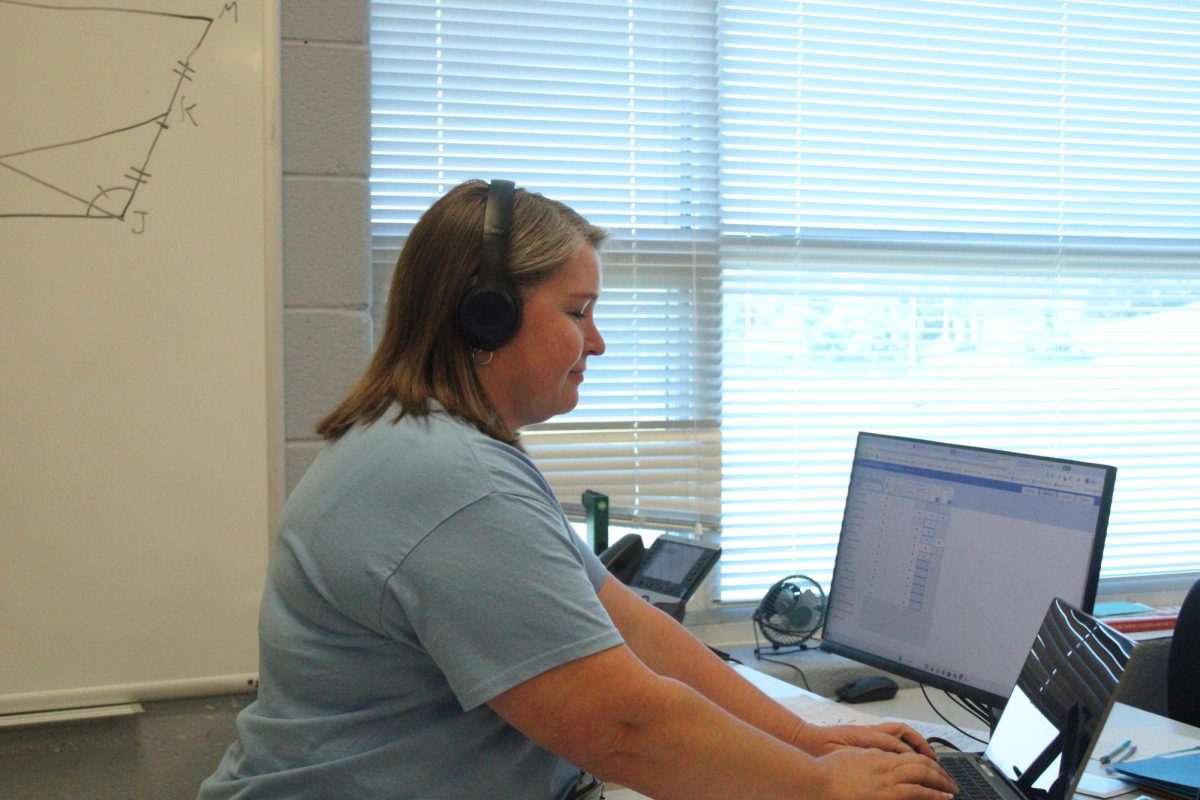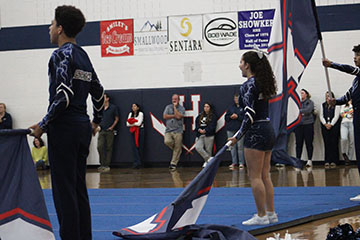Teachers reflect on first full virtual semester
A desk set up for a student in school while learning virtually.
March 2, 2021
For many teachers in the United States, the first semester of school was very rough this year. Due to the Covid-19, schools have been forced to convert partially or entirely to virtual learning. Teachers are now forced to think about the second semester; however, as it is quickly approaching.
History teacher Christy Oakes and many other teachers have been using Canvas to give students virtual lessons.
“I think the biggest thing [with virtual school] is actually how to use Google Meet and Canvas effectively, and it took most of the first semester to get comfortable with everything. I’m teaching all new classes next semester, so it’s not like I get to use the same content, but now I know how to use the technology,” Oakes said.
With the second semester incoming, both teachers and students wonder if school could return to a possible in-person format.
“In terms of format, I think the next semester will be the same. I am not confident we will be back in school. But comparing the virtual first semester to the second, I think it will be a little easier just in that we have worked out the wrinkles. Not just teachers but students too. Adjusting to virtual school will make it easier to be successful in the second semester,” Oakes said.
Before the first semester of school had begun this year, teachers had to learn and make many things to prepare for virtual learning.
“Figuring out how to use Google Meet and Canvas was the biggest challenge. Most of us including me had never used Canvas before. We also had to build our lessons from scratch which is also very time-consuming.” Oakes said.
Cybersecurity teacher Geoffray Estes has taught a variety of classes for the last 25 years such as math and cybersecurity.
“I like being on the stage and leading lectures, but what I would like to see change [with virtual learning] is giving my students more chances to be interactive in the class. I know it’s hard because we sit in front of the screen for so many hours during the day and it’s easy to zone out, but my hope is that we can find ways to make that a better experience and more engaging for our students in the spring semester,” Estes said.
Even with 25 years of teaching experience under his belt, Estes still learns things through teaching virtually this past semester.
“It is hard to get students to talk to you, [and] when you are face to face it seems a little bit easier. We have those visual prompts, so we can tell from our faces and gestures and we don’t have that in the situation we’re in,” Estes said.
Although Estes is fine with teaching virtually, he believes that there are some things that could be different this second semester.
“If I could change one thing about the previous semester, I would like to find a way to interact with my students at a much higher level, One of the reasons I do what I do is [because] I love the interactions I have with my students. I love when learning happens, and I love that look in their face when they go ‘wow I get it’ and have that epiphany. That’s just different here, and if I could find a way to have that in an online environment, that would be awesome.” Estes said.
Estes has some advice for students in this virtual learning atmosphere.
“I think I can speak for all of my teacher colleagues when I say this: Just be patient and keep at it. You know that you have a support system within the teaching core, the administrative core, and the school, we’re here for you. We want to hear about any issues you’re having. My big message would be,[to] take advantage of that. We all love what we do, and we are here for you and we want to be here for you. Sometimes I know it’s hard to reach out and talk to your teachers about things that are concerning you, but I want to say that we love you, and we wish you all the best and all the safety for you and your family. We can’t wait to see you face to face in the future,” Estes said.



